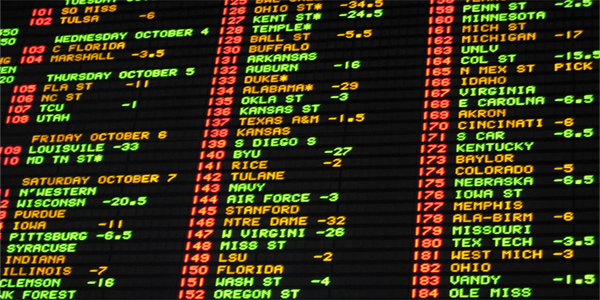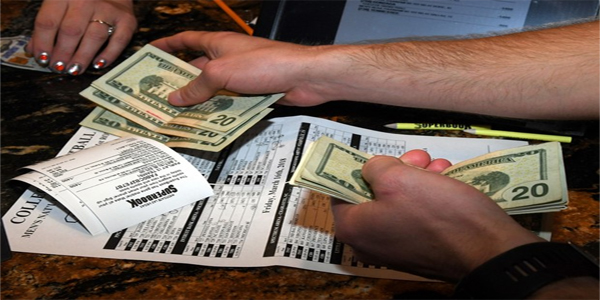Hang around this industry long enough and you’re going to hear “key numbers” enough times to turn it into a drinking game that even Andre the Giant might find a way to lose. Line value is something that is discussed a lot among professionals and amateur handicappers, but not everybody knows exactly what it means. This article covers some of those topics, but we want to expand on one key element mentioned in that write-up. Key numbers are very important, but it’s also important to keep in mind that the definition of a key number is shifting a little bit.
Scoring in football is largely done by threes (field goals) and sevens (touchdowns + extra points). There are other random occurrences like two-point conversions, safeties, and blocked extra point returns. As a result, the key numbers in the NFL have traditionally been known as 3, 4, 6, and 7. If you want to expand a little bit farther, you can make a case for 10, 11, 13, 14, 17, and so on, though those definitely drop in importance the higher you go.
It’s pretty easy, really. A game can very easily end 24-21 with three touchdowns for each team and a field goal for one of the teams. A team that settles for a field goal while the other scores a touchdown and kicks the extra point would win by four. A two-field goal advantage creates a final margin of six points. Obviously, one additional touchdown and extra point means a seven-point win.
As a result, the numbers 3, 4, 6, and 7 have always carried higher importance in the NFL and college football betting markets. Also, slight deviations on either side of those numbers, like 2.5, 3.5, 4.5, 6.5, and 7.5 have always carried additional weight. Being able to get a +7.5 on an underdog rather than a +7 on an underdog is a pretty significant edge. Similarly, getting -6.5 instead of -7 is a pretty significant edge.
A byproduct of the scoring system is that it creates opportunities for bettors to improve their standing by moving off of these key numbers. Just about every sportsbook allows its clients to buy half points or full points to adjust to the line to a more advantageous number. Bettors can pay anywhere from 20 to 40 cents to move off of a key number by “buying” -3 to -2.5 or +3 to +3.5. All sportsbooks are different in terms of how much additional juice they buy, but the idea all stems from how important these key numbers are.
Lately, however, some rule changes have adjusted the importance of the traditional key numbers. They are still very important in terms of market entry and in terms of getting value on the line, but extra points are no longer a given. During the 2016 NFL regular season, teams connected on 93.6 percent of their extra point attempts. During the 2015 NFL regular season, kickers came in at 94.2 percent on PATs. During the 2014 NFL regular season, kickers made 99.3 percent of their extra points.
What changed? Well, as you know, the extra point was pushed back from the two-yard-line to the 15-yard-line. That difference of 13 yards has been pretty significant, as you can see by how the success rate of extra points has plummeted. During the 2014 season, teams attempted 58 two-point conversions. They were only successful on 28. The number of two-point conversion tries ballooned to 94 in 2015, with 45 successful tries, and it increased even more in 2016 to 105 attempts, with 51 successes.
These things have thrown a wrench into key numbers as we know them in the NFL. Teams miss an extra point and wind up having to go for two at some point. Or, they outscore the opposition anyway and don’t win the game by seven points. Maybe they win by five or six. It used to be believed that numbers between four and six were the “dead zone” because games rarely landed five. Anything can happen now.
Incredibly, the 2015 season, the first one with the extra point moved back, saw about 16 percent of games end with a three-point spread. That was pretty much on par with the 15.67 percent of games that finished with that margin of victory from 2002-2014. In that same sample from 2002-2014, about 9.7 percent of games ended with a seven-point margin of victory. That number was up around 11 percent in 2015. It probably doesn’t surprise you to see that 10 and 4 were lower than the average in that sample. The biggest jump, not surprisingly, was that games ending in a six-point margin of victory ballooned to over nine percent, which was well above the 5.55 percent average from 2002-2014.
With 32 teams playing 16 games apiece during the regular season, there were 256 NFL games last season. Out of those games, here are some notable margins of victory:
1 point: 15 (5.9%)
2 points: 11 (4.3%)
3 points: 31 (12.1%)
4 points: 10 (3.9%)
6 points: 17 (6.6%)
7 points: 28 (10.9%)
This data is quite interesting. As you can see and as the 2015 data suggested, six is a more important key number than it used to be. There have also been moderately significant gains for 1 and 2, which came in just 3.92 percent of the time from 2002-2014. Four is less of a key number than it used to be. Three was less of a key number last year than it was the previous year. Seven was about on par with the previous season. Three was not as important as it has been in the past. We’ll have to monitor that to see if its simply variance or something else.
This is all important data to consider when looking at the value of a number and when to enter the market. It’s something to monitor because we know that bookmakers are worried about key numbers and oddsmakers certainly consider them when setting numbers. You need to do the same.






